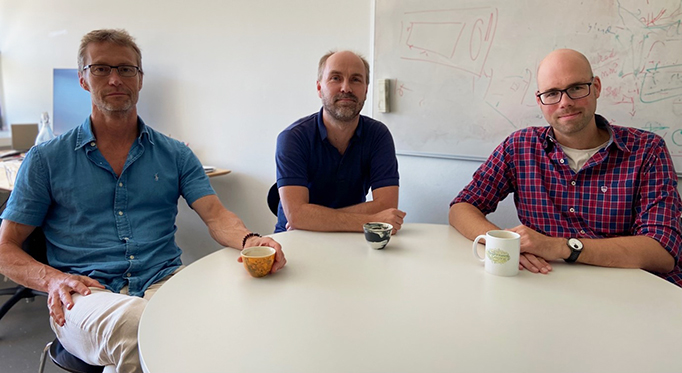Major research project studies what it looks like when HIV and coronavirus proteins bind to medications
The way in which molecules interact forms the basis of life and treating illness. But what does it look like when a viral protein meets and binds to molecules like those found in medications? A new research project has been awarded DKK 65 million by the European Research Council and will now aim to shed light on this hitherto invisible process.

Proteins are essential for every process that makes life possible. So, understanding how they work is crucial. For example, when they allow medications to work by binding to the molecules of which the medication consists of. So far, this is a vital process that has been virtually impossible to observe directly through experiments, though efforts have been made to imitate it using somewhat rigid computer models.
"Our current description of proteins as static molecules limits our ability to understand them. They make spontaneous transitions between different states and some of these movements are rare and often invisible to traditional research methods. This research project will shed new light on the invisible processes, so that we gain a deeper understanding of them and what happens when a protein binds to another molecule," says Professor Kresten Lindorff-Larsen from the Linderstrøm-Lang Centre for Protein Science at the University of Copenhagen’s Department of
Biology.
Together with Mikael Akke, professor of biophysical chemistry at Lund University and Eike-Christian Schulz, research group leader in biochemistry and signal transduction at University Medical Center Hamburg-Eppendorf, Professor Lindorff-Larsen will make use of this major grant of just over DKK 65 million from the European Research Council in a six-year method development project.
The result can be compared to a movie
In practical terms, the researchers will study how proteins in viruses such as HIV and SARS-CoV-2 bind to molecules that occur naturally in cells and are like those found in pharmaceuticals. The purpose is to map how the structure and energy of proteins changes during the binding process.
To study these miniscule binding processes in the world of proteins, it is necessary to combine several measurement methods, of which each participating research team is an expert in. The Department of Biology is contributing molecular simulations and other calculation tools, Lund University is performing nuclear magnetic resonance spectroscopy and Hamburg is adept at time-resolved X-ray crystallography.
"You could say that we’re moving structural biology into a new era of protein dynamics, in which it is necessary to combine our various methods to understand and quantify all the details. One method provides valuable information for the other, and by combining and integrating these methods, we can jointly contribute to the creation of entirely new knowledge about how proteins and smaller molecules interact," says Kresten Lindorff-Larsen.
According to the researchers, the result can be compared to an advanced molecular film that describes how molecules and proteins bind to each other. The researchers hope to gain new insight into how long it takes for a drug molecule to bind to a protein in the body and for how long the molecule stays there. Knowledge that, in the long run, could lead to uniquely designed and more effective medications.
About DynaPLIX
DynaPLIX stands for Dynamics of Protein–Ligand Interactions. The project is funded through an ERC Synergy Grant of EUR 8.7 million over a six-year period. The project participants are: Professor Mikael Akke at the Division of Biophysical Chemistry, Center for Molecular Protein Science, Department of Chemistry, Lund University; Professor Kresten Lindorff-Larsen at the Linderstrøm-Lang Centre for Protein Science, Department of Biology, University of Copenhagen; and Dr. Eike-Christian Schulz at the Center for Experimental Medicine, University Medical Center Hamburg-Eppendorf.
Contact
Kresten Lindorff-Larsen
Professor
Department of Biology
University of Copenhagen
Mail: +45 3532 2027
Mobile: lindorff@bio.ku.dk
Michael Skov Jensen
Journalist & teamkoordinator
Faculty of Science
University of Copenhagen
Mail: msj@science.ku.dk
Mobile:+ 45 93 56 58 97
